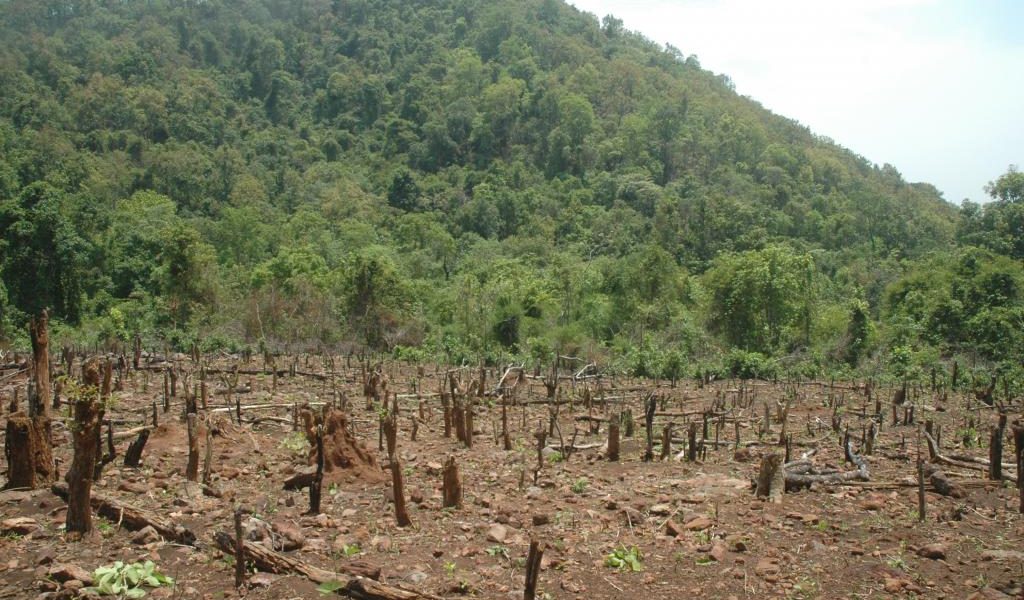Summary: This article delves into the environmental regulations in both the United States and India, focusing on how they may prioritize private property rights over environmental conservation. Specifically, it looks at the recent SCOTUS ruling on the Sackett Case, and the recent India’s Forest Conservation Amendment Bill 2023. By drawing comparisons between the USA’s historical environmental regulations and India’s present-day policies, the article seeks to highlight the potential pitfalls of a pro-industry and deregulatory stance that may not be sustainable for a developing country like India.
INTRODUCTION
On May 25, 2023, the Supreme Court of The United States (‘SCOTUS’) handed down a ruling on Sackett v. Environmental Protection Agency (‘EPA’) (‘the Sackett Case’) , a case concerning wetlands which are regulated under the Clean Water Act. The Justices unanimously agreed that the EPA overreached when they attempted to regulate wetlands on Sackett’s (the plaintiff) Idaho property. The dissenting judges argued that limiting the EPA control will have significant repercussions on climate change as well as water quality and flood control throughout the USA. Not much later in August, in India, the Forest Conservation Amendment Bill 2023(‘the Bill’), which was passed by the Lok Sabha has come under attack for several drastic changes it proposes to the Forest Conservation Act, 1980(‘FCA/the Act’) under the garb of increasing the forest cover to create a carbon sink of additional 2.5-3.0 billion tons of Carbon Dioxide equivalent by 2030.
The Bill’s principal thrust is in redefining what a ‘forest’ is under Indian law. It stipulates that only those lands that were notified as ‘forest’ under the Indian Forest Act 1927, any other relevant law, or were recorded as ‘forests’ in government records will be acknowledged as ‘forests’ under the Act as well. The Act will no longer apply to some forest lands (such as deemed forests and community forests) which are functional forests as per the dictionary meaning of the term, but not ‘officially’ recorded as forests. It essentially limits the wide applicability of the extant act which applies to “any forest land”. The judgment as well as the Bill seem to protect private property owners from government regulations. While the Bill has been criticised for excluding vast tracts of forest land from the ambit of the original Act, little has been written about the extent of the impact of such regulatory measures promoting private property over environmental conservation. This is the question the article delves into.
The article primarily argues that the deregulatory, pro-industry and anti-environment approach adopted by the government may not be environmentally sustainable for a developing country like India in the long run. In doing so, it draws lessons from the experience of USA (a developed country) in the early stages of its development. The article has been divided into two parts. The first part deals with how the environmental rule-making in both India and USA has upheld private property rights. It elaborates on why the US government had to regulate the private property interests in the early stages of development to balance public interest. The second-part of the article considers the impact of the Bill on another category of stakeholders; the forest dwellers and wildlife and concludes with some recommendations.
UPHOLDING PRIVATE PROPERTY RIGHTS
In the Sackett Case the SCOTUS held that the proper test for determining whether wetlands are ‘waters of the United States’ under the Clean Water Act is the continuous surface connection test. As per this test, the courts have interpreted “adjacent” to mean adjoining,and held that wetlands that are separate from traditional navigable waters cannot be considered part of those waters, even if they are located nearby. While the experts in environmental law condemned the decision which would leave many wetlands subject to pollution without penalty, sharply undercutting the EPA’s authority to regulate wetlands under the Clean Water Act, it has been hailed as a victory for property rights, limiting the scope of the Clean Water Act. The proponents of the property rights movement have argued that the intent of key American founders and the principles embodied in the founding documents of the U.S. make the protection of private property rights a key element of the American political and social contract. Thus, what is needed is a national state strongly committed to the ideal and reality of private property, andits protection and integrity.
Like the SCOTUS, the Indian government also sought to adopt a deregulatory approach by introducing the Bill which aims to exclude huge tracts of forest land from the ambit of the Act due to “national security” and “defence” purposes. It seeks to exempt linear infrastructure projects- like roads and highways – from seeking forest clearance permissions if they are located within 100 km of the national border. “Strategic linear projects of national importance” is a very vague term which is prone to misuse for pushing through infrastructure projects that devastate the ecology.
The Bill also provides for the establishment of zoos, safaris and eco-tourism facilities in forest areas other than protected areas, which was not specified earlier in the Act. A major feature of the Bill is the encouragement provided for private forests and agro-forestry projects. It has been contended that the bill disproportionately commercializes forest and wildlife without due consideration to the rights of forest dependent people, wildlife and ecosystem services. The last section of the article delves deeper into this issue. The implication of the Bill is that other than protecting the national parks and wildlife reserves, every other forest patch can be opened for mining, hydro-projects, linear projects, railway projects, and eco-tourism. These provisions indicate that the government is adopting a ‘hands-off approach’, with the primary focus being facilitating the diversion of forest land to private businesses.
PRIVATE PROPERTY, DEVELOPMENT AND ENVIRONMENT
The United States is commonly and broadly understood to be a strong private property nation and has lengthy experience with private property rights as the bases for both its economic and political systems. There is often a belief that the creation of social and legal institutions for private property rights will, by themselves, create conditions for functioning markets and robust economic development.Thus, over the last few decades, developing countries around the world have moved to introduce the social and legal institutions of private property. This tendency has been aided by advocacy suggesting that the creation of private property is the central variable to the alleviation of poverty in developing countries.
It seems that, under the garb of promoting afforestation and meeting the country’s carbon targets, the Indian government is merely trying to promote private interests by commercializing forest and wildlife. The Bill ensures that private forests and agro-forestry would not be considered forests in the traditional sense, which means that these too would be exempt from the provisions of the original Act. That would ensure that farmers or owners of these private forests can harvest their lands, for commercial or other uses, without the need for acquiring forest clearance.Nothing in the law relates either to the conservation or regeneration of forests other than merely stating those words in its title. The law speaks about building forests by planting trees. However, plantations cannot be passed as forests. Such a move will only result in the nation losing natural forests for plantations.
In doing so, the bill nullifies the SC’s judgment inT.N. GodavarmanThirumulpad v UOI ,1996 as per which the Court brought this land under the ambit of the Forest Conservation Act by ordering that the actual vegetation should determine FCA applicability. This eventually led to the creation of a new legal category called “deemed forest” land.
While it may seem that privatising forests may encourage economic development and functioning markets, thereby contributing to India’s vision of a $5 trillion economy by 2025, it is crucial to not lose sight of what the Bill originally intended to achieve. The Statement of Object and Reasons of Bill states that it intends to broaden the horizon of the Act to achieve the objective of the country to increase the forest cover for creation of carbon sink of additional 2.5 to 3.0 billion tons of CO equivalent by 2030. Lessons can be learnt from USA in the latter part of the 19th and early part of the 20th centuries where forests drew the attention of corporate forest interests who acquired land for commercial purposes. Post harvesting, they abandoned the land – literally walking away from their ownership of it.
The climate, the soil, and the agroecological conditions made this abandoned area largely unsuited for agriculture. The result of the forest harvesting and subsequent attempt to farm the marginal land resulted in widespread ecological and consequent social and public fiscal disasters. This fiasco that resulted from unmanaged market-driven decision making by forest corporations compelled the government to interfere to regulate and balance private and public interests in land use. Thus, the US experience indicates that the role of government as an active manager of private property rights comes about because of increasing urbanization, increasing market activity, and increasing threats to public health, safety, and welfare. Government began introducing an array of rules and regulations like The Clean Air Act, Clean Water Act, Coastal Zone Management Act, and National Environmental Policy Act whose purpose was to restrict the rights of private property owners through regulatory powers of the government.
Thus, the experience of the United States demonstrates that the proper equilibrium between private property rights and public interests is not a static concept; but rather, it evolves over time in response to shifting societal, economic, and technological factors. It is disheartening to witness the Supreme Court of the United States thwarting the legislative goal of safeguarding wetlands. This interpretation seems to favour unfettered capitalism at the expense of ethical considerations, ultimately benefiting industries with a track record of environmental harm, such as mining, oil and gas, and development.
Like the United States, the Indian government has shown a tendency to embrace a deregulatory stance when it comes to environmental protection. This approach, akin to the crony capitalism seen in the USA during the 19th and 20th centuries, can pose significant risks to the environment. As previously mentioned, there are no provisions in place for the preservation or restoration of forested areas. The current definition of forest land in India is rather restrictive, which ultimately favours commercial interests. As we will explore in the next part, this legislation has wide-ranging consequences for marginalized communities, especially vulnerable tribal groups.
The author is a second-year law student at NLSIU Bangalore.
[Ed Note: This Article has been edited by Sohina Pawah and published by Harshitha Adari from the Student Editorial Team.]






Good info! thank you for sharing.
Interesting article, thank you for sharing….
Interesting article, thank you for sharing…
Wonderful article, thank you for sharing…
Interesting article, thank you for sharing….